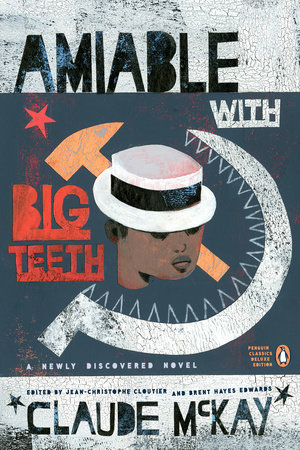
News
Summers Will Not Finish Semester of Teaching as Harvard Investigates Epstein Ties

News
Harvard College Students Report Favoring Divestment from Israel in HUA Survey

News
‘He Should Resign’: Harvard Undergrads Take Hard Line Against Summers Over Epstein Scandal

News
Harvard To Launch New Investigation Into Epstein’s Ties to Summers, Other University Affiliates

News
Harvard Students To Vote on Divestment From Israel in Inaugural HUA Election Survey
'Amiable with Big Teeth,' Newly Discovered Time Capsule

When a Columbia graduate student discovered Harlem Renaissance writer Claude McKay’s final novel, the world enthusiastically and gratefully accepted “Amiable with Big Teeth” into the literary canon. Set in Harlem in the 1930s, “Amiable with Big Teeth” explores the strained relationships between black Americans trying to aid Ethiopia after Mussolini’s invasion and white Communists using the cause to further their own. The novel is a testament to the racial tension and political scheming of the time. Claude McKay’s “Amiable with Big Teeth” is a satirical goldmine, a time capsule that encompasses a political labyrinth of treachery present in Harlem in the 1930s.
“Amiable with Big Teeth” centers around the divide in New York between the Communists and black patriots as they vied for the allegiance of Harlem’s African Americans. When an Ethiopian prince, Lij Alamaya, is sent by his nation’s government to gather African Americans for his country’s cause, he unknowingly puts himself in the middle of a tug-of-war between two enemy parties. While the Hands to Ethiopia, led by black leader Pablo Peixota, are trying to rally African Americans [toward][AROUND] the cause of the Ethiopians, the White Friends of Ethiopia, led by Maxim Tasan, are trying to pull them into the clutches of the Communist Party. For his own benefit, Tasan uses the Ethiopian cause to entice them. The novel thus pits black people against white people, patriotism against communism, and selflessness against egocentrism. Furthermore, McKay’s genuine depiction of Harlem emphasizes the novel’s sincerity. “Harlem is the stamping ground of false prophets,” mourns a character. “Amiable with Big Teeth” is indeed a tableau of the northern part of Manhattan. The setting for parades, parties, and protests, Harlem stands out as the heart and home of the story.
McKay’s characters encapsulate the driving force behind the satire by being effectively one-note. McKay’s contemporaries might not have appreciated hiss characters as much had the novel been published at the time because the characterizations would have been too simple and obvious to them, for they would have a clear understanding of what Harlem was like. But for today’s time, they are the perfect exemplars to illustrate the complexity of Harlem’s situation. Indeed, McKay uses simplicity to depict complexity. Each character is either good, bad, or lost, and each is so particularly recognizable in their being that the book clearly demarcates the different types of people and ideologies that might have existed in the 30s. Lij Alamaya is the Ethiopian emperor’s envoy to the United States; loyal to his country and passionate about his cause, he is initially too naive to understand the new society he is in. Seraphine is a giddy young woman trying to navigate both her romantic life and racial identity. Peixota is the fervent, self-sacrificing believer in the cause. Maxim Tasan is the duplicitous self-serving snake.
“Amiable with Big Teeth” undeniably enriches the literary world. Not only is it renowned author Claude McKay’s final novel, it also serves as a poignant time capsule capable of transporting those who want to be immersed in a world they may never have heard of. It reveals the politics behind protests, underlines enduring racial tensions of the time, and establishes the climate in Harlem in the years leading up to World War II. With his vividly described characters and setting, McKay depicts a vanished time that remains relevant today.
—Staff writer Mila Gauvin II can be reached at mila.gauvin@thecrimson.com
Want to keep up with breaking news? Subscribe to our email newsletter.
